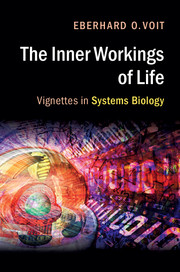Book contents
- Frontmatter
- Contents
- Appetizer
- Acknowledgments
- 1 Status: it's complicated!
- 2 I'd rather be fishin’
- 3 Whizzes and apparitions
- 4 Why?
- 5 Simply engenious!
- 6 Just a little bit
- 7 Supermodels
- 8 Close only counts in horseshoes and hand grenades
- 9 Emergence preparedness
- 10 Life without chaos?
- 11 What hath God wrought!
- 12 Tell me with whom you go and I'll tell you who you are
- 13 Time for a change!
- 14 Can't we all get along?
- 15 Love thyself and fight all others
- 16 A billion dollars for your thoughts!
- 17 The computer will see you now…
- 18 Redesigning perfect
- 19 Let's meet in the agorá!
- 20 Dessert
- Gentle jargon
- Selected further reading
- Index
8 - Close only counts in horseshoes and hand grenades
Published online by Cambridge University Press: 05 May 2016
- Frontmatter
- Contents
- Appetizer
- Acknowledgments
- 1 Status: it's complicated!
- 2 I'd rather be fishin’
- 3 Whizzes and apparitions
- 4 Why?
- 5 Simply engenious!
- 6 Just a little bit
- 7 Supermodels
- 8 Close only counts in horseshoes and hand grenades
- 9 Emergence preparedness
- 10 Life without chaos?
- 11 What hath God wrought!
- 12 Tell me with whom you go and I'll tell you who you are
- 13 Time for a change!
- 14 Can't we all get along?
- 15 Love thyself and fight all others
- 16 A billion dollars for your thoughts!
- 17 The computer will see you now…
- 18 Redesigning perfect
- 19 Let's meet in the agorá!
- 20 Dessert
- Gentle jargon
- Selected further reading
- Index
Summary
It was allegedly major league baseball manager Frank Robinson who inspired the phrase, emphasizing that “close don't count in baseball.” Only one team wins the World Series in a given year, even if the point spread in Game 7 is just one. Indeed, “close” is unacceptable for many aspects of life. Proper bookkeeping does not tolerate missing dollars or even cents. Almost winning the lottery, or almost getting the dream job, let alone the dream girl or guy, simply isn't good enough. Sometimes, “almost” seems even worse than missing the target by a wide margin.
If life with all its vagaries and uncertainties is so often dissatisfied with “close” or “almost,” one would probably expect that hard-core science and engineering are even tougher when we miss the mark, even if only barely. And what does mathematics, the most precise of all human endeavors, have to say about “close enough”? It may come as a surprise, but science, engineering, and mathematics all embrace the concept of only being sufficiently close rather than 100 percent accurate, as long as the deviations are handled appropriately.
Two reasons make the quest for uncompromising precision infeasible, especially in a field like systems biology. First, we seldom know what the exact and precise truth is, and nature does not come with an instructions manual that offers guidance regarding the choice of perfect models. Second, the truth is usually too complicated for us to comprehend in its entirety, let alone convert into a computational representation. As an illustration, suppose we are interested in constructing a computational model of a cellular signaling process. With a coarse-grained perspective, the task is not all that difficult. The cell receives a signal in the form of a physical change in the environment, such as an electrical or mechanical impulse, or a chemical stimulus, such as the arrival of a hormone that was sent from a different location in the body, and responds by synthesizing the proteins or metabolites it needs. We could model this signaling mechanism like a light switch that turns the appropriate processes on or off. In mathematical terms, a simple toggle switch between 0 and 1 would do fine, and for some purposes, such a model might indeed be sufficient.
- Type
- Chapter
- Information
- The Inner Workings of LifeVignettes in Systems Biology, pp. 60 - 67Publisher: Cambridge University PressPrint publication year: 2016



